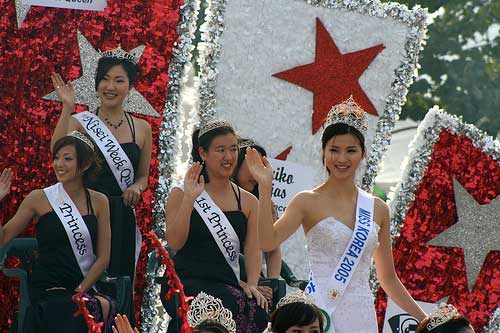South Korean Beauty Industry
For long cosmetic surgery has common in South Korea, but it wasn't until recently that society has become more open about it and the practice has become exceedingly widespread. Nowadays, even young women go plastic surgery shopping, particularly those entering marriage and job markets.
Instead of going to the mall and buying shoes, young women go to Seoul's "beauty belt" - a group of hundreds of plastic surgery clinics gathered around a string of subway stations in the posh districts of southern Seoul- and get plastic surgery done.
South Korea has even upstaged Brazil as the plastic surgery capital of the world and now has the highest number of surgeries performed per capita. As cosmetic surgery is not covered by national health insurance, it is difficult to determine the exact size of the industry, but a survey last year by the Seoul city government found that 31.5% of residents 15 or older were willing to undergo surgery to improve their looks. This figure has increased dramatically compared with 2007 data which was 21.5%.
According to a 2009 survey by the market research firm Trend Monitor, one of every five women in Seoul between the ages of 19 and 49 said they had undergone plastic surgery. The number of plastic surgeons has almost doubled in the past decade to 1,500. As this lucrative field becomes more competitive, some clinics host "Cinderella events," offering patients free surgery in exchange for appearing in their ads.
Double eyelid surgery -to make the eyes look larger and rounder- is so common in Seoul that most women on the streets seem to have a double fold despite the fact that only one of every five Koreans is born with one.
In the past few years, extreme practices like double-jaw surgery –originally developed to repair facial deformities, which involves cutting and rearranging the upper and lower jaws- has become a popular procedure among South Korean women for whom mere nose jobs or paring down cheekbones does not suffice anymore.
This trend has been influenced by celebrities who strive to keep ahead of digital technology –like high-definition TV and close-ups- that make their imperfections obvious, so make use of another facet of technology –plastic surgery- to counteract it.

